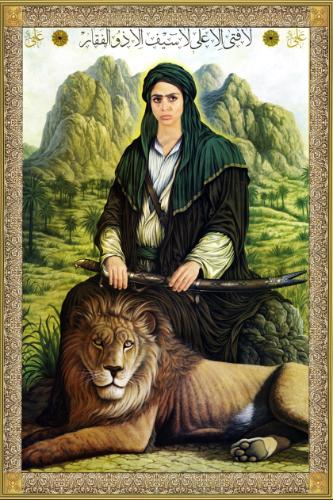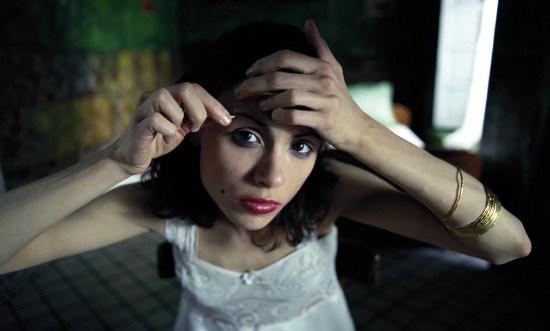
Shoja Azari Icons & Shirin Neshat’s Women Without Men
In the largest room at LTMH Gallery, Shoja Azaris images of Iranian holy martyrs striking poses of power and courage shine out from backlit cases. It reminds you of movie displays from the 1920s.

Shoja Azari "Icon # 1" 2010 Video Portrait
In those days, westerners associated Islamic countries with sex, rather than with political terror or stern religious regimes. Sheiks had harems then. Now theocracies plan a nuclear future and put dissidents in prison. Put all those preconceptions aside. Azari is portraying five of the Shiite Martyrs, saints in this sect of Islam which allows picture-making. But women instead of men wear the martyrs clothes. If that isnt sinful by official Iranian standards, what is? Icons, as his show is called, makes it hard to know whom even the faithful should venerate.
Call it satire, iconoclasm, or sacrilege. (“Its sacrilege, but not blasphemy,” Azari told me the day Icons opened. Could that distinction ease the anger of those whom the pictures offend?) The portraits undermine official holiness by placing women where they dont belong officially. In an image of a man/woman holding a child up to the heavens, you see figures who look Christian (Madonna and Child) or even Jewish (Abrahams sacrifice of Isaac – note that Islam and Judaism share the Old Testament). With scenes like these, the mullahs might be longing for Salman Rushdie.
Saints in drag? Even the Danish newspaper that ran the Mohammad cartoon might pause there.
But this is New York, not Tehran. You can laugh or wince at Azaris martyrs, or at a wall-sized video of a traditional Persian coffee-house painting that depicts multiple bloody scenes like a two-dimensional 1001 Nights. Like European tapestries that celebrate victories and defeats in battle, coffee paintings are anything neutral but neutral – not that you would expect this artist to be. Think of it as a new twist on geo-politics.
Azari embeds his video version with traditional scenes and with images of Western intervention. Beyond the literal side of this technique, which documents conflicts that suggest the Crusades never ended, the images of US soldiers or battles that shift in time are scars that trespass onto a harmonious fabric.
Icons is on view in New York at the same time that Azaris Iranian-American wife, Shirin Neshat, has released her sumptuous debut feature, Women without Men, adapted from a 1990 novel set during the US-backed coup of 1953.
Neshat seems to be assuming that we all know the story of how the CIA and British intelligence planned and supported the overthrow of a democratically elected government that was about to nationalize Irans oil industry. (For the details, try the CIAs own exhaustive history of the coup.)

Women Without Men
What we see instead of a political thriller are secular women whose struggle in 1953 is not with US but with the strictures of traditional Iran. Given the consequences since 1953 — a dictatorship under the Shah then Islamic theocracy after 1979 — the coup on-screen is a grim warning to anyone who would consider attacking the country in the name of progress.
Neshats visual signature is everywhere – iconic close-ups, panoramic crowd scenes, and subtle textures in gardens. The story, like the novel, builds on atmosphere rather than the kind of story-line American audiences find familiar. Neshats eloquent images fill the gaps.
Shell be no more welcome in Tehran than her husband. The novel by Shahmush Parsipur is banned in Iran. So is the new film.
(top photo: Shirin Neshat Women Without Men (woman knitting), 2004 c-print 36 x 92 1/4 inches (91.4 x 234.3 cm) Copyright Shirin Neshat Courtesy Gladstone Gallery )
